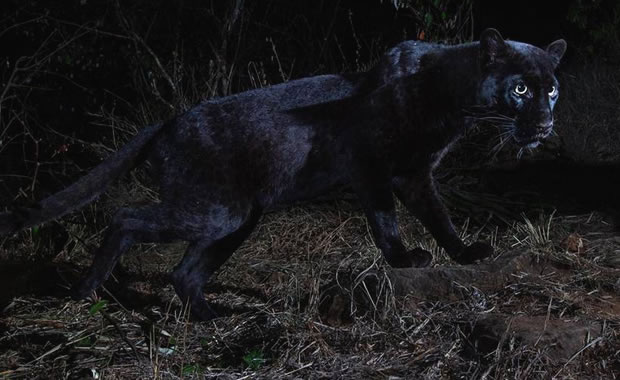

Giant Otter
|
Creature Profile
The giant otter is the largest of the otter species and is found in the lakes, rivers, creeks and swamps of South America. Adults can reach up to 6 feet in length and can weigh up to 76 lb. Males are larger than females. The giant otter's fur is dense, thick and velvety and brown in color. Its head is round and it has small ears, and there is a uniuqe white mark located on its throat that can be used to distinguish between individuals. Its nose is completely covered in fur with only the two slit-like nostrils visible. Giant otters are excellent hunters underwater possessing large and acute eyes, and they can also close their ears while underwater. The legs are short and stubby and its feet are equipped with webs and sharp claws.
Giant otters are very social animals and groups of up to 20 individuals have been found in forms of "family groups." Each individual in the groups has a role, and there is one main breeding pair. Diet consists mainly of fish, crabs and even caimans and snakes. Giant otters can consume up to 10 lb of food a day. Breeding occurs year-round, and females give birth to litters of 1 to 5 pups after a gestation period of 65 to 70 days. The pups are taught to swim after two months, but remain dependent on the mother for two to three years.
Today, there are only about 2000 to 5000 giant otters left in the wild. The main cause of decline is hunting of the giant otter for its fur. Its thick velvety fur was once worth a year's wages in South America driving them to near extinction in the 1970s. The giant otter is also shot by fishermen who consider them competitors for fish. Habitat loss and disturbance of their natural habitat is also a threat. All pelt trade has been banned to help protect the species.
Wikipedia Article

|
Wikipedia Article Copyright Notice: This article is licensed under the GNU Free Documentation License. It uses material from the Wikipedia article "Giant otter". |
More Links about the Giant Otter:
Reference Links:Giant Otter - Animal Diversity Web
May 9, 2017
Glenn, C. R. 2006. "Earth's Endangered Creatures - Giant Otter Facts" (Online). Accessed 5/7/2024 at http://earthsendangered.com/profile.asp?sp=311&ID=11.
Need more Giant Otter facts?




